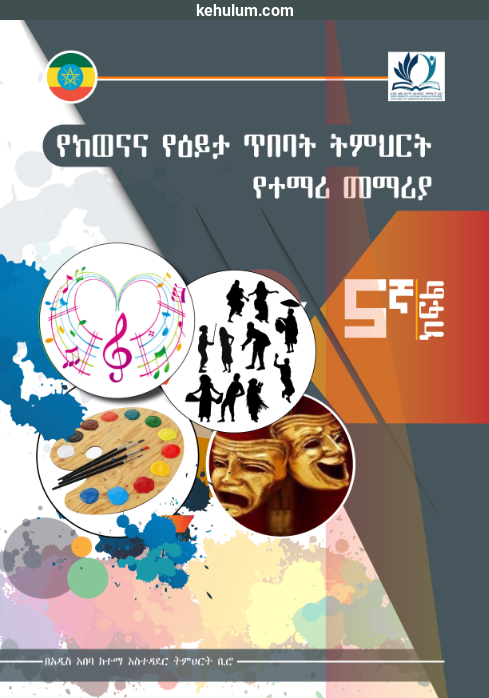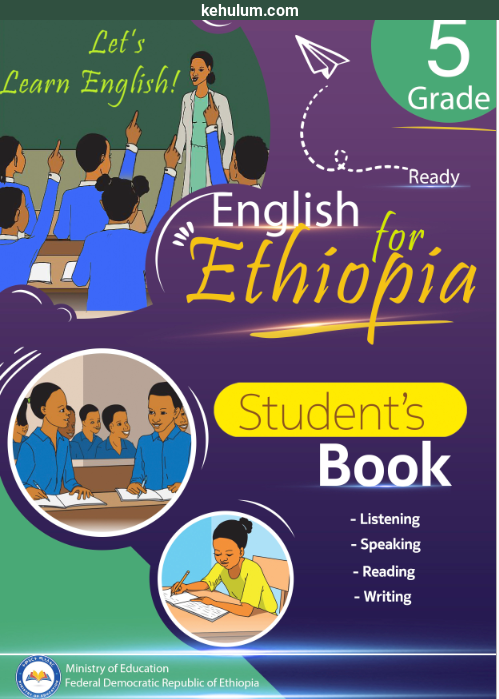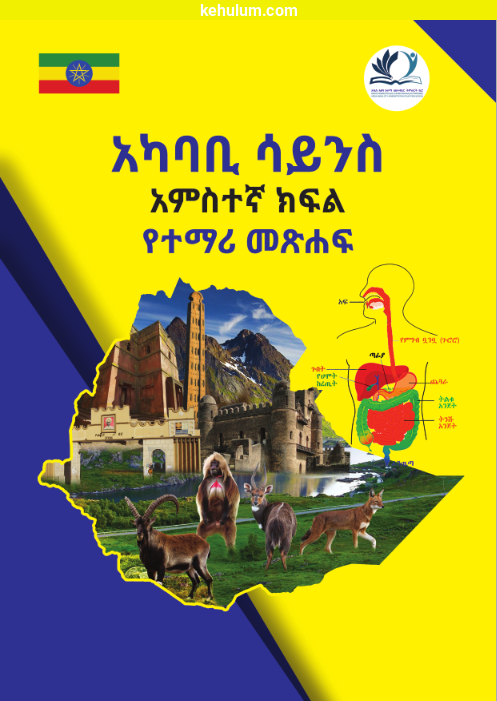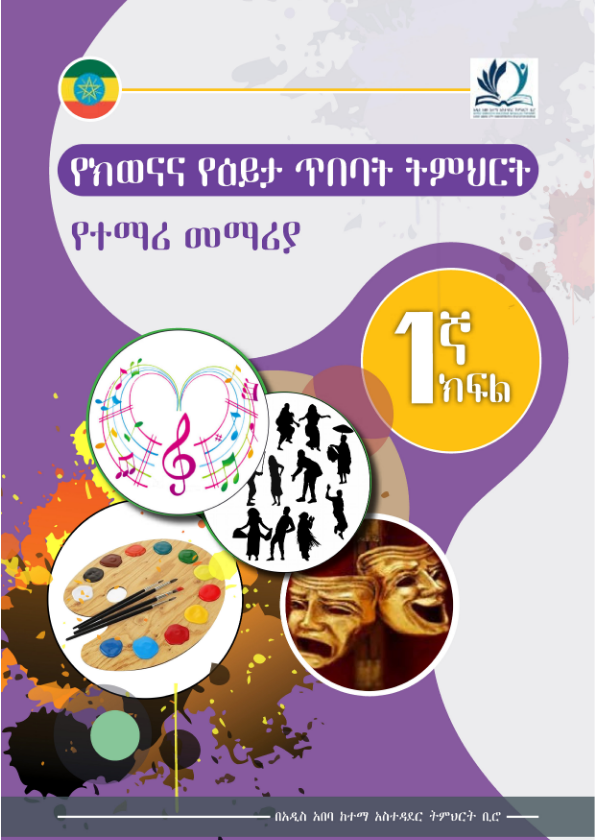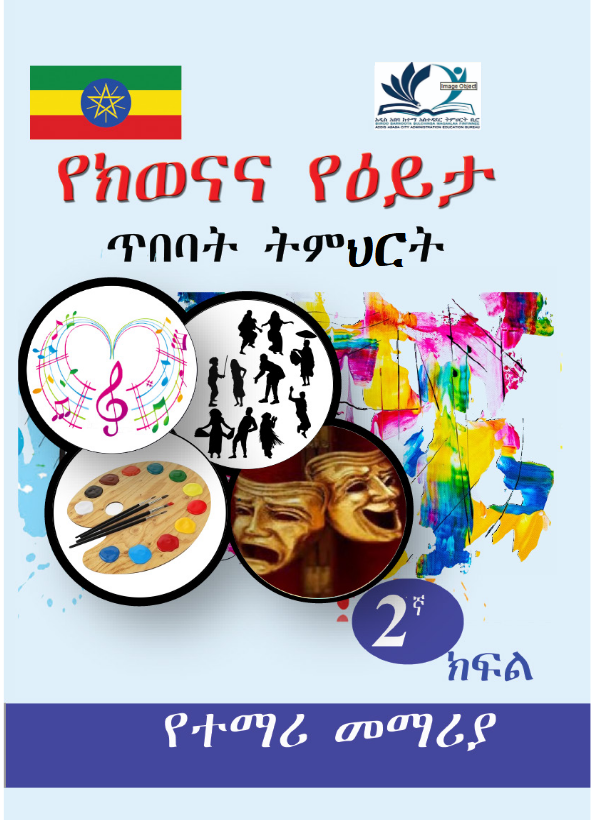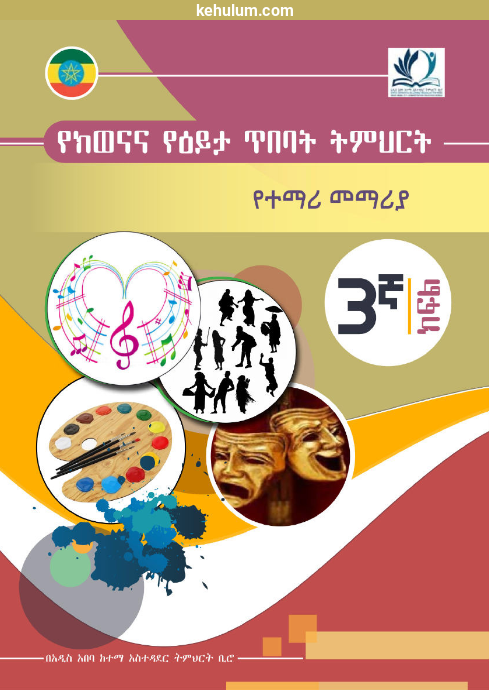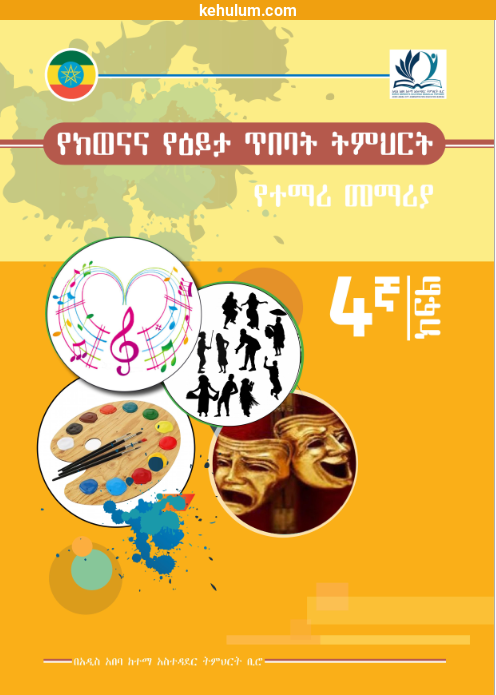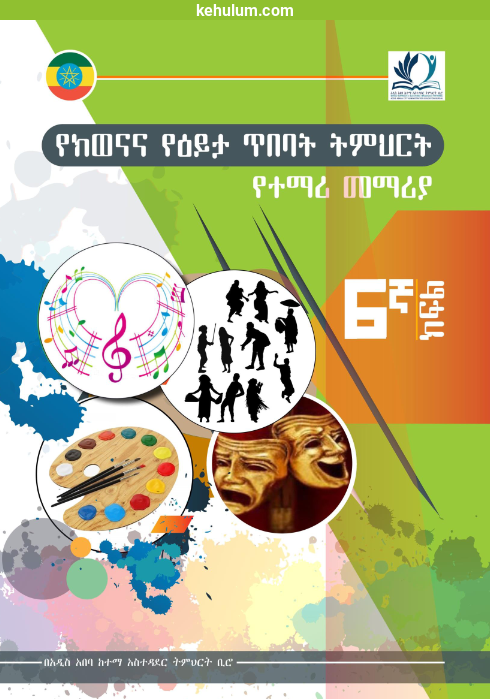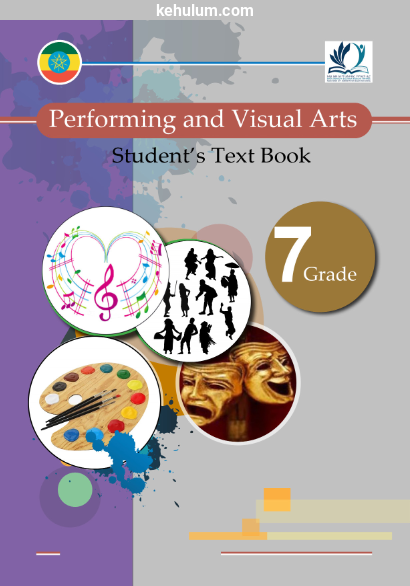This Textbook contains 5 chapters
- ምዕራፍ 1: ጥበባዊ ግንዛቤ
- ምዕራፍ 2: ፈጠራን መግለፅ
- ምዕራፍ 3: ታሪካዊና ባህላዊ አውዶች
- ምዕራፍ 4: ሥነ-ውበታዊ እሴት (ዋጋ)
- ምዕራፍ 5: መርታ ዝምድናና፣ ትግበራ
ምዕራፍ አንድ – ጥበባዊ ግንዛቤ (Chapter One – Intellectual Understanding)
Students explore musical and visual literacy, learning the basics of rhythm, pitch, melody, harmony, timbre, and duration. Dance and body movement are introduced as forms of expression, emphasizing coordination, space awareness, and the use of props. Theater basics cover actors, audience, sets, artistic resources, simple video techniques, and recording from multiple perspectives. Visual arts concepts include line types, 2D and 3D shapes, environmental placement, color use, and traditional artistic styles such as Shakalse / Shakarana / Lislasse.
Key Sections:
- 1.1 የሙዚቃ አላባዊያን (Musical Concepts)
- 1.2 የውዝዋዜ አላባዊያን (Dance Fundamentals)
- 1.3 መሰረታዊ የትያትር አላባዊያን (Basic Theater Techniques)
- 1.4 የዕይታ ጥበባት አላባዊያን (Visual Arts Concepts)
ምዕራፍ ሁለት – ፈጠራን መግለፅ (Chapter Two – Defining Creativity)
Students begin writing musical notes, naming them, and understanding staff notation with clefs and accidentals. Dance is used to express musical ideas, and theater exercises integrate costumes, makeup, and props. Visual arts include paper mosaics, printing, and cleaning techniques, fostering hands-on creativity and problem-solving.
Key Sections:
- 2.1 Writing and naming musical notes
- 2.2 Staff, clefs, and accidental signs
- 2.3 Expressing musical sounds through dance
- 2.4 Theater using costumes and makeup
- 2.5 Facial and cosmetic resources
- 2.6 Paper mosaics and printing techniques
ምዕራፍ ሶስት – ታሪካዊና ባህላዊ አውዶች (Chapter Three – Historical and Cultural Contexts)
Students explore community-based music, dance, theater, and visual arts. This includes national anthems, folk dance types, oral traditions, and cave painting history. Emphasis is on cultural identity, storytelling, and connecting historical art to present practices.
Key Sections:
- 3.1 Community-use national anthems
- 3.2 Types of folk dances
- 3.3 Folk tales and oral history
- 3.4 Visual arts history and cave painting
ምዕራፍ አራት – ሥነውበታዊ ዕሴት (Chapter Four – Aesthetic Value)
This chapter examines the aesthetic importance of music, dance, theater, and visual arts. Students discuss differences and similarities between musical, theatrical, and dance arts. Visual arts are highlighted for physical benefits, memory improvement, and emotional expression.
Key Sections:
- 4.1 Comparing music, dance, and theater
- 4.1.1 Traditional folk dance vs. music and theater
- 4.1.2 Theater vs. music and dance
- 4.2 Importance of visual arts in society
- 4.2.1 Physical benefits
- 4.2.2 Visual arts for memory enhancement
ምዕራፍ አምስት – ጥምርታ፣ ዝምድናና ትግበራ (Chapter Five – Ratio, Relationship, and Application)
Students study arts in relation to social issues such as traffic, HIV/AIDS, drugs, and other cross-border topics. Activities include combining musical, dance, theater, and visual arts with social awareness projects. They also learn about signs, posters, organizational logos, and other applied art forms used in everyday life.
Key Sections:
- 5.1 Music addressing social issues
- 5.1.1 Cross-border sector themes
- 5.1.2 Combining multiple issues in plays and activities
- 5.1.3 Environmental signs and logos
- 5.2 Commercial and civic logos, traffic, and road signs
- 5.2.3 Poster design and presentation

